Oxalic acid? Oh no! Here Is A Rainbow of Low Oxalate Fruits: 18 Options to Choose From.
If you’re on a low oxalate diet or just trying to avoid those pesky little crystals, you’ll be pleased to know that there are still plenty of sweet treats on the menu.
Yes, you heard right! You don’t have to give up on all the fruit just yet.
But hold on, before you fill up your blender with all these low-oxalate fruits on the list, let’s remember that although these fruits may be low in oxalates, they still pack a sugary punch.
So, grab a glass of water, sit back, and let’s take a look at the low oxalate fruit list and find out which sweet delights you can indulge in without breaking the oxalate-diet bank.
Low Oxalate Fruit List: (less than 4 mg per serving)
Below I have compiled a table of easy-to-follow options that won’t turn you into a human oxalate crystal. From sweet and juicy pineapple to tangy apples, these fruits are packed with nutrients and won’t cause issues for those who need to limit their oxalate intake.
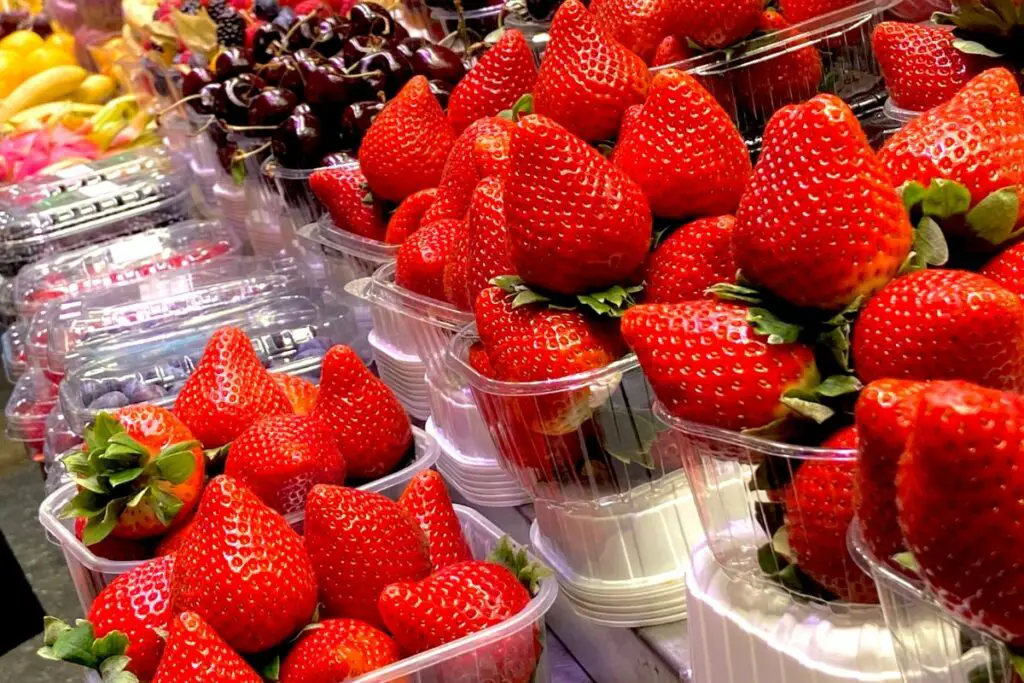
| Fruits: | mg oxalate per serving |
|---|---|
| Pineapple | 4 mg of oxalate per cup |
| Bananas | 3 mg oxalate per 1 fruit |
| Cherries | 3 mg per 1-cup serving |
| Blackberries | 2 mg per 1/2 cup |
| Blueberries | 2 mg per 1/2 cup |
| Pears | 2 mg per pear |
| Strawberries | 2 mg per 1/2 cup |
| Apples | 1 mg per apple |
| Papaya | 1 mg per fruit |
| Honeydew melon | 1 mg per cup |
| Mango | 1 mg per mango |
| Watermelon | 1 mg per 1 slice |
| Cantaloupe | 1 mg per 1/4 melon |
| Grapes, seedless | 1 mg per 1/2 cup |
| Apricots | Less than 1 mg per fruit |
| Nectarine | Less than 1 mg per fruit |
| Peaches | Less than 1 mg per fruit |
| Plums, green or yellow | Less than 1 mg per fruit |
1. Pineapple
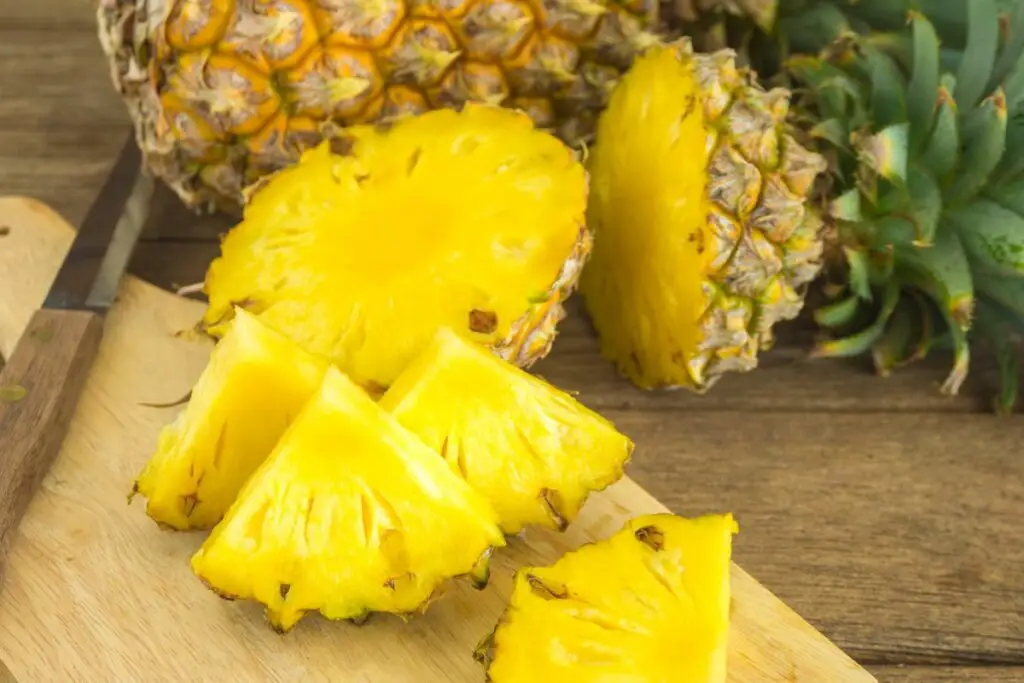
Pineapple is barely hanging on to its place on the low oxalate food list with 4 mg of oxalates per cup. That’s right, just barely making the cut. But let’s not be too hard on our tropical friend here.
Pineapple packs a punch with its sweet, juicy, and tangy flavor. Plus, it’s an excellent source of vitamin C, which is great for boosting the immune system.
2. Bananas
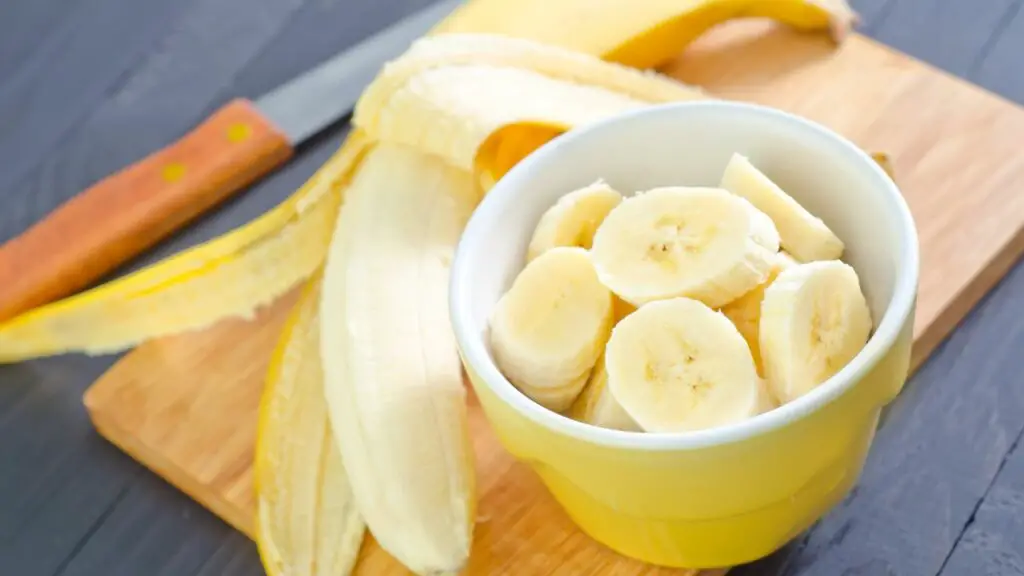
Well, well, well, look who also barely made it onto the low oxalate fruit list, the one and only banana!
Don’t get too excited; I think that; bananas are also a bit on the high side for oxalates, but that could be just me.
With 3 mg of oxalates per 1 banana, you can still enjoy one or two a day without going overboard. Just don’t go crazy making banana smoothies all day long.
But seriously, it’s good to know that this sweet and versatile fruit can still be enjoyed on a low-oxalate diet.
Read Also: Brown or Black Banana – Is It Rotten or Still Edible?
3. Cherries

Well, cherries, you also just barely made it to this low oxalate fruit list with its 3 mg of oxalates per one-cup serving. But hey, don’t feel bad; you’re still a delightful addition to your diet.
Just keep in mind that there are other fruits on this list coming up with even fewer oxalates.
4. Blackberries
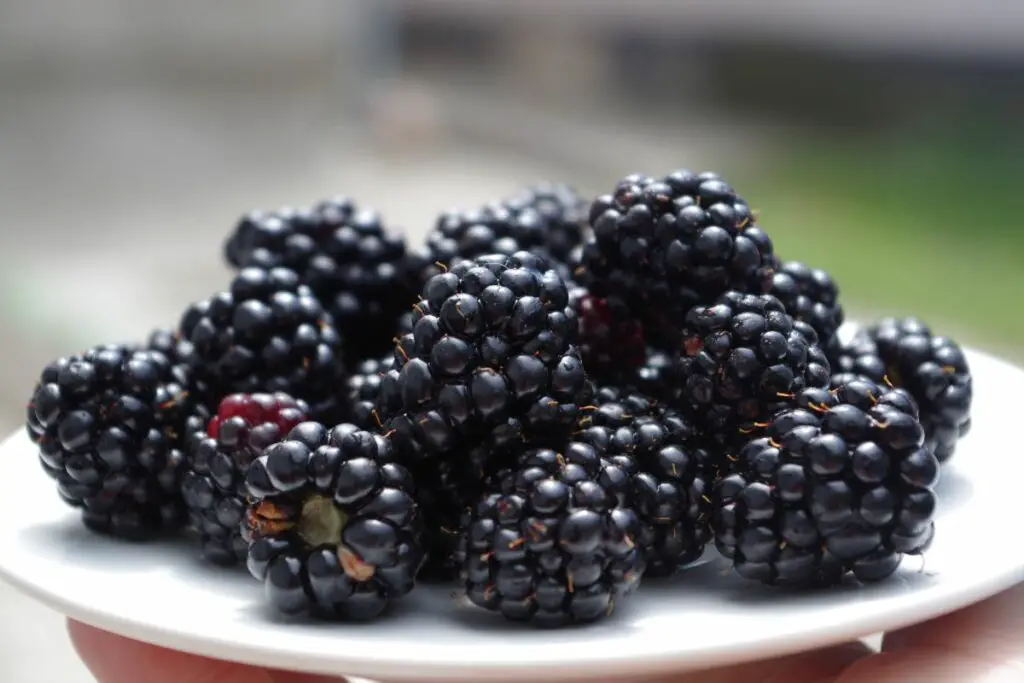
Blackberries are a berry good choice! With just 2 mg of oxalates per half a cup, these juicy treats make the list of low-oxalate foods. Perfect for a sweet snack or adding to a protein shake, blackberries are a low oxalate win-win.
5. Blueberries
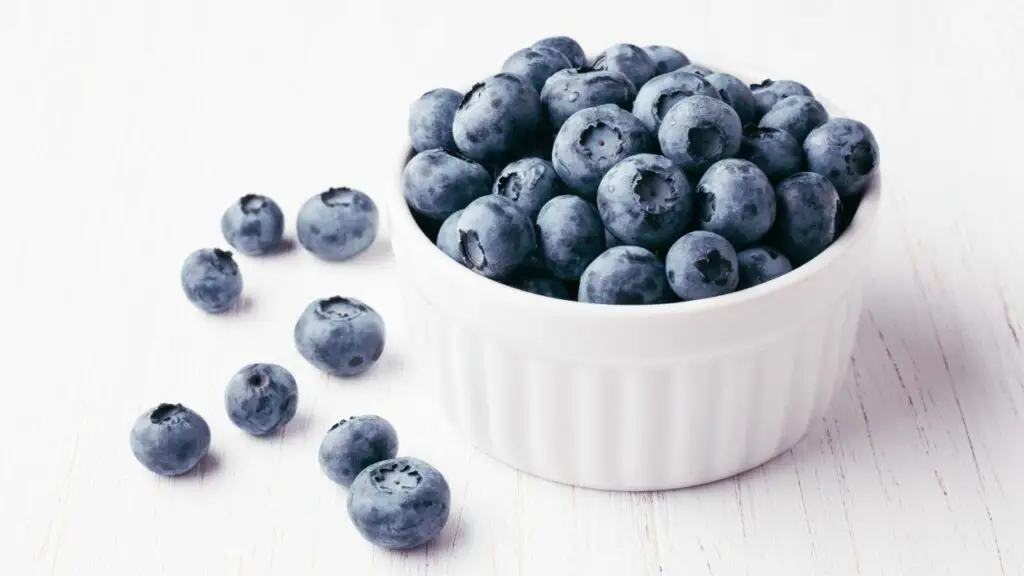
Just like blackberries, blueberries are sweet and juicy, with 2 mg of oxalate per 1/2 cup. They’re a great addition to fruit salads and smoothies for a pop of color and flavor.
6. Pears
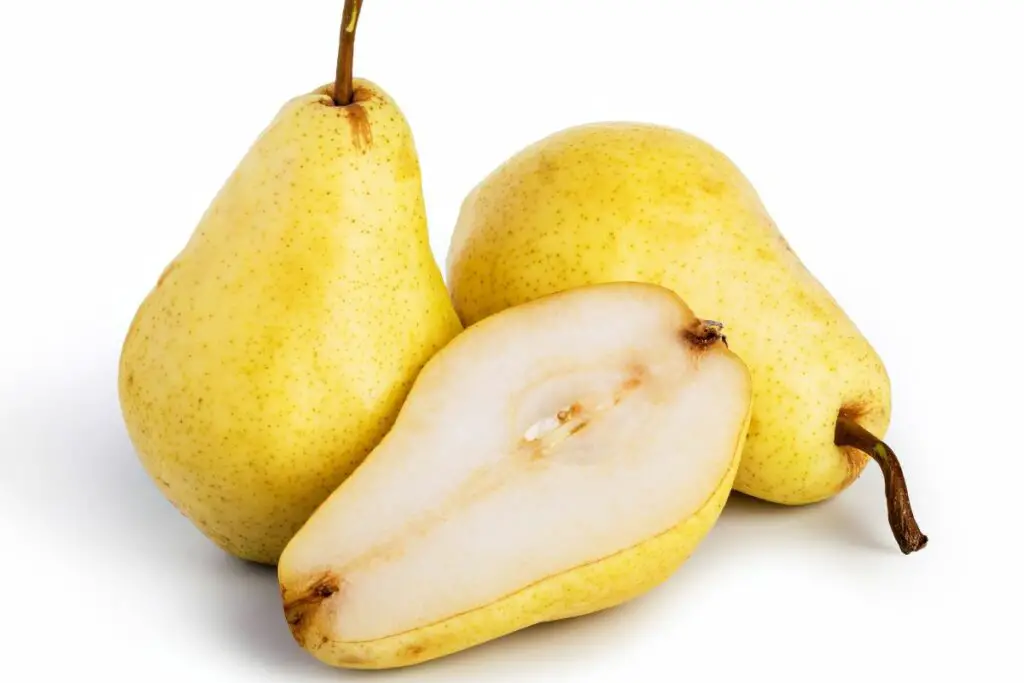
Pears, sweet and juicy, are a great option for those watching their oxalate intake. Each pear contains 2 mg of oxalate, making it a versatile fruit that can be enjoyed raw, cooked, or baked.
7. Strawberries
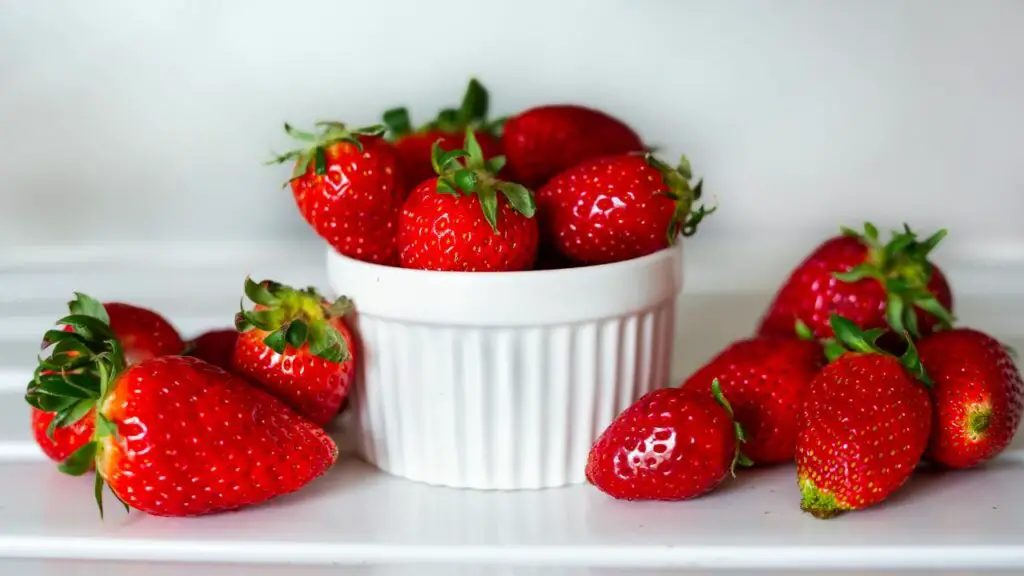
The little red balls of sunshine! Did you know that strawberries are not only delicious, but they’re also low in oxalates?
That’s right; these sweet and juicy berries pack a punch in flavor, but not in oxalates. With only 2 mg per half a cup serving, you can snack on strawberries to your heart’s content.
8. Apples
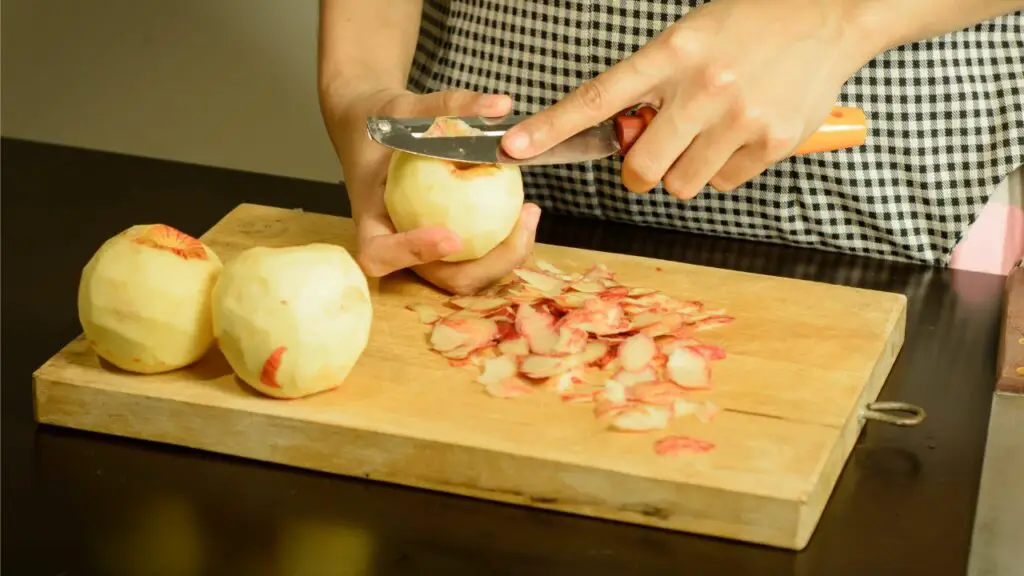
Apples, oh how we love thee! These crunchy, juicy, and delicious fruits are not only great for our taste buds, but they are also great for our health.
Apples are a low oxalate food, with only 1 mg of oxalates per apple. That’s right; you can now have your apple a day and keep the oxalates at bay!
Apples are a great addition to any low-oxalate diet, making them easily one of the low-oxalate food list’s favorites.
So, next time you’re feeling a snack attack coming on, don’t reach for the kiwi but reach for an apple instead. Your taste buds, and your kidneys, will thank you!
9. Papaya
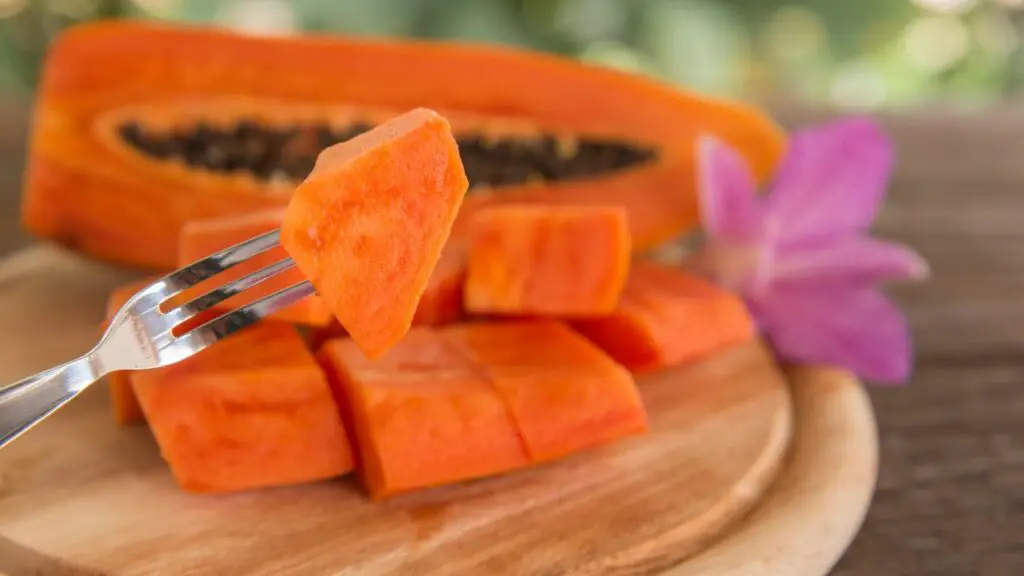
Alright, now we’re talking exotic! Papayas are a great source of vitamins and minerals, and they’re also a low-oxalate fruit option.
One medium papaya has only 1 mg of oxalates, so you can enjoy the tropical goodness guilt-free.
10. Honeydew melon
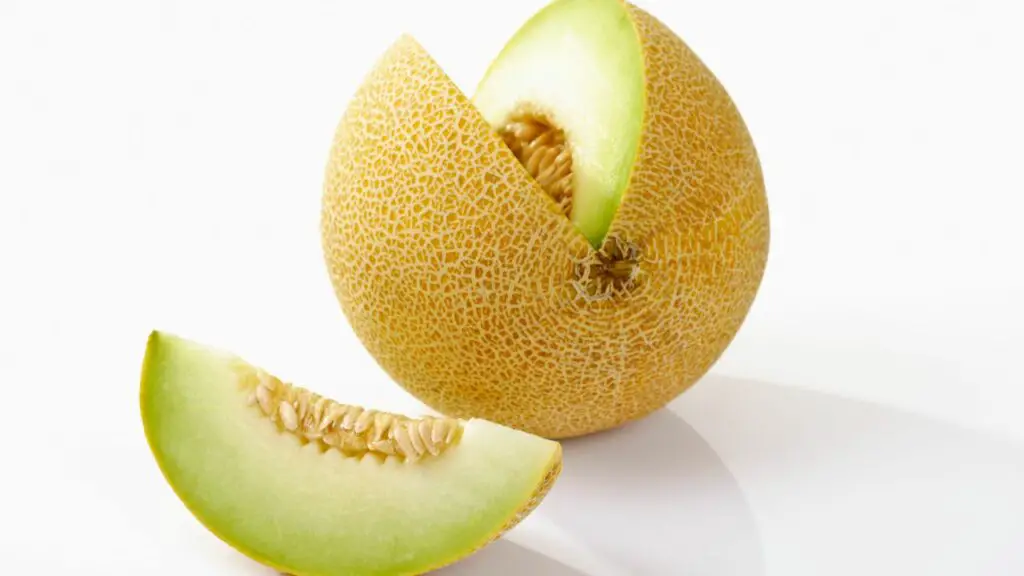
Let’s talk about a sweet tooth’s best friend – honeydew melon! It’s super juicy and sweet, and it also happens to be low in oxalates.
One cup of honeydew melon has only 1 mg of oxalates. That’s like a green light for you to indulge your sweet tooth. Yum!
11. Mango
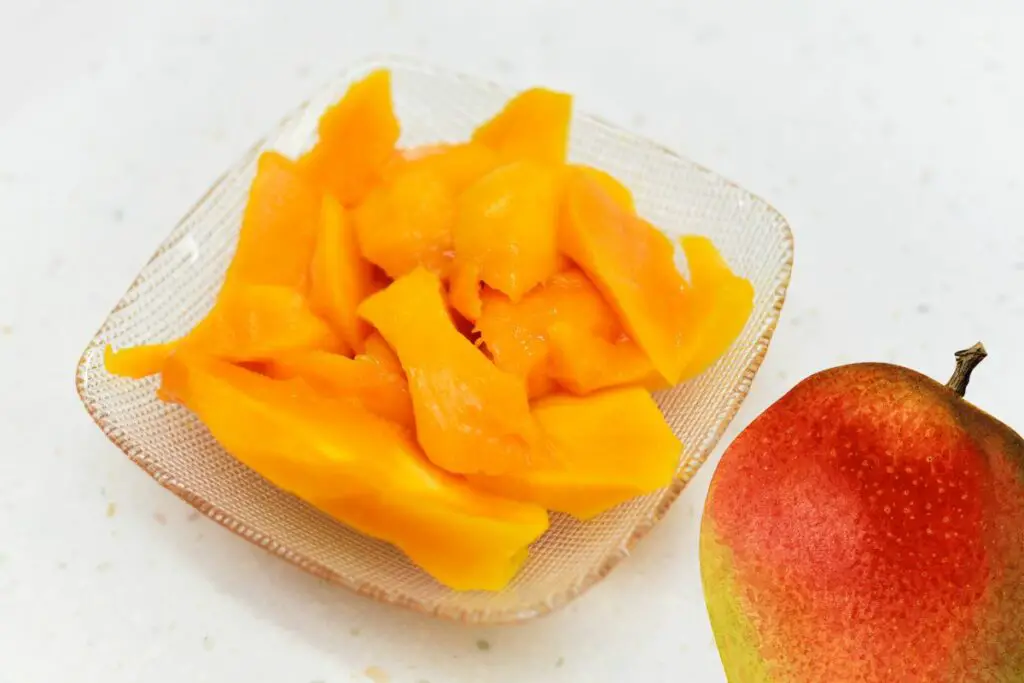
Mangoes are like sunshine in a fruit. They’re sweet, juicy, and perfect for a summer day. And the best part?
One mango has only 1 mg of oxalates! So, you can savor the flavor of summer without worrying about turning into a human oxalate crystal.
12. Watermelon
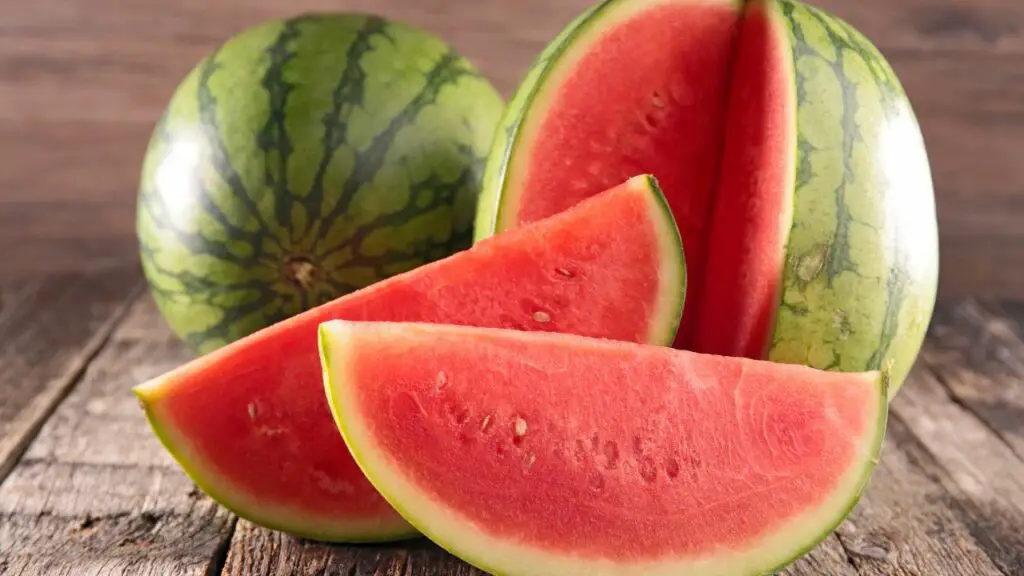
It’s time for everyone’s favorite fruit – watermelon! This juicy, sweet, and refreshing fruit is a staple of every summer. And, you’ll be happy to know, it’s also low in oxalates.
One slice of watermelon has only 1 mg of oxalates.
13. Cantaloupe
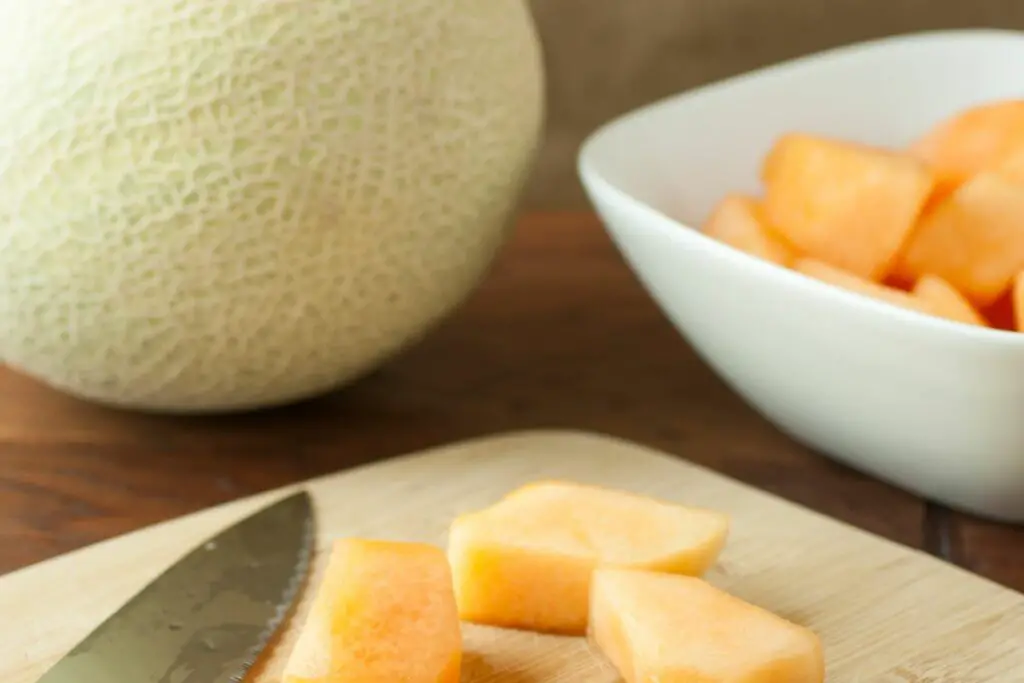
Can we just take a moment to appreciate the greatness that is cantaloupe? This juicy, sweet, and fragrant fruit is perfect for a hot day, and it’s also low in oxalates.
One-quarter of cantaloupe has only 1 mg of oxalates. So, go ahead and have another slice; it’s all good!
14. Grapes
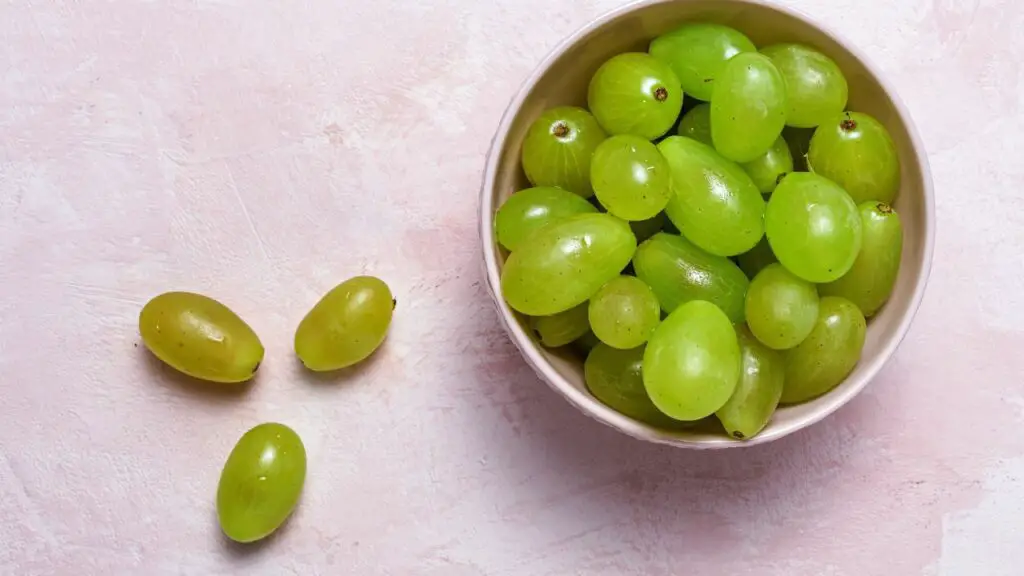
These little guys are the perfect snack, and they’re also low in oxalates, that is if they are seedless.
One-half cup of green seedless grapes has only 1 mg of oxalates. So, whether you prefer red or green, you can have your grapes and eat them too!
15. Apricots
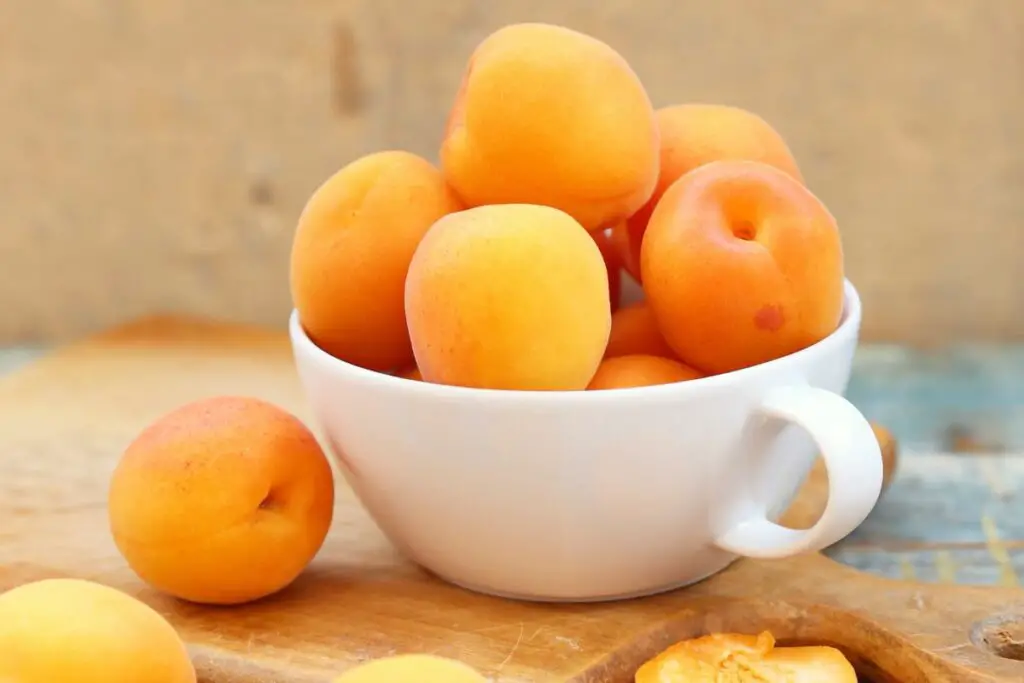
Apricots are not just good for your taste buds; they’re also low in oxalates! And, the best part? They have less than 1 mg of oxalates per fruit. So go ahead, have another.
16. Nectarine
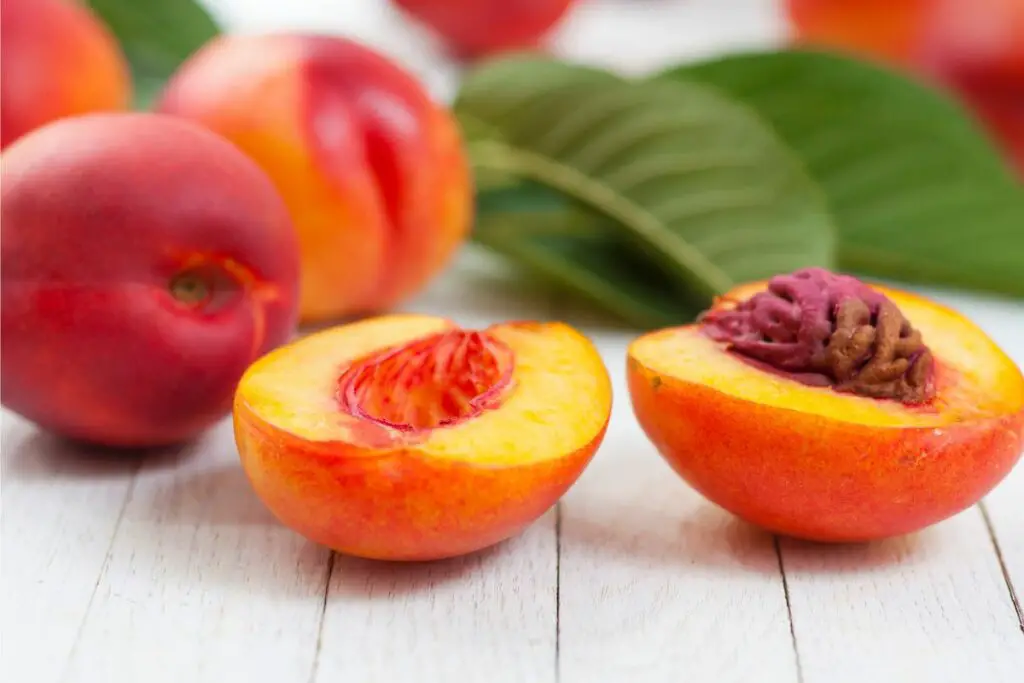
This little gem has easily made its way to the low oxalate food list with a bang! With less than 1 mg of oxalate per fruit, it’s a great option for those who are looking to replace that high oxalate orange.
So, go ahead and add some nectarines to your next grocery list and enjoy a delicious, low oxalate snack.
17. Peaches
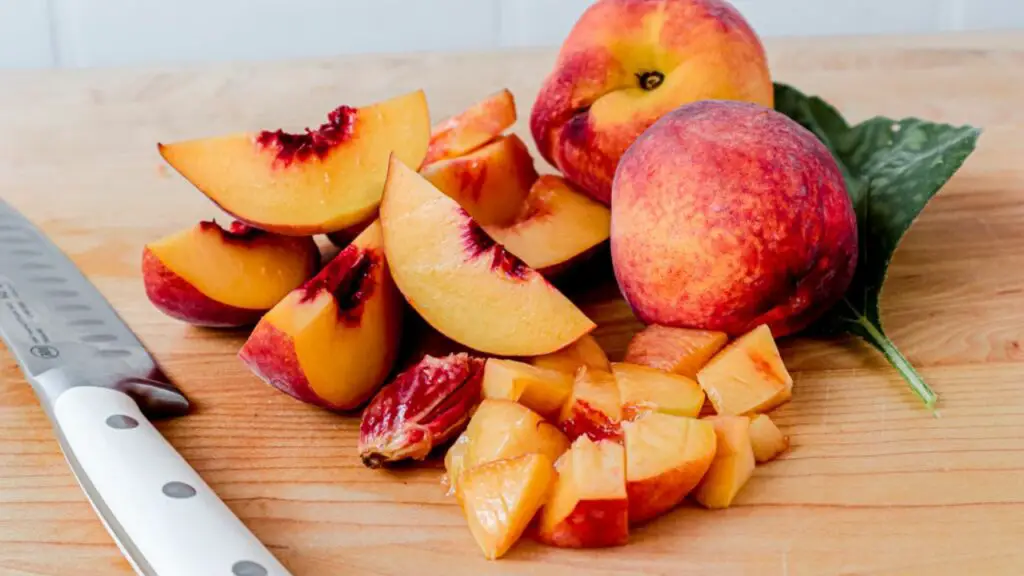
These juicy and sweet summer fruits are another staple of every summer. And, the best part? Peaches have less than 1 mg of oxalates per fruit.
18. Green or yellow plums
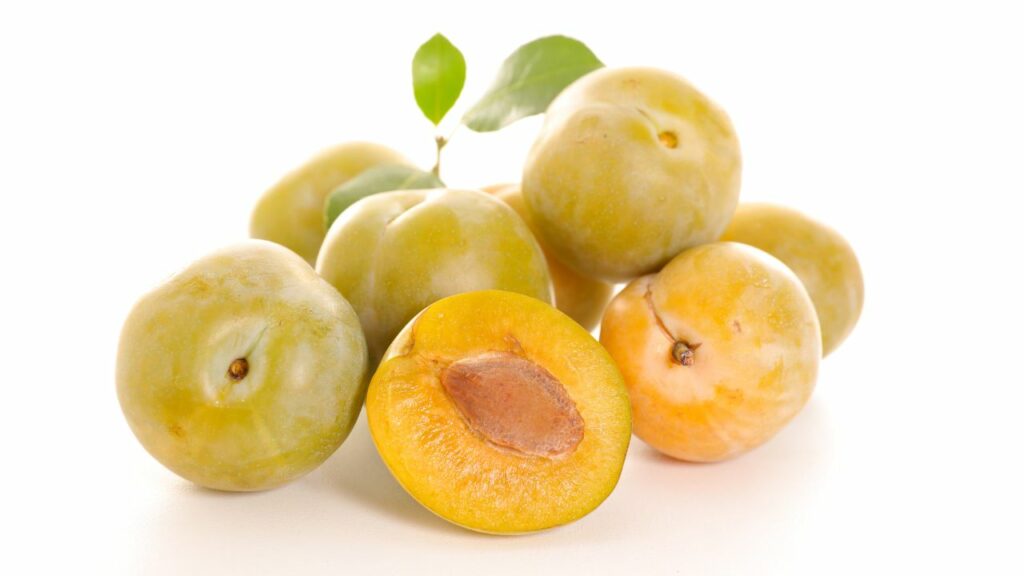
Green or yellow plums are the life of the low oxalate party, with less than 1 mg of oxalate per fruit. Plums are sweet and juicy addition to any diet. Perfect for snacking or adding to a fruit salad, you bring just the right amount of flavor without overloading the oxalate.
In Conclusion
So there you have it, 18 delicious low-oxalate fruits that won’t turn you into a walking, talking pile of oxalic acid.
Whether you’re trying to avoid kidney stones or just trying to maintain a low oxalate diet, these fruits have got your back.
So go ahead, treat yourself to a sweet and juicy watermelon or perhaps a fresh and juicy nectarine. Your body will thank you for it! And who knows, you might even find your new favorite fruit along the way.
Just remember, moderation is key, so don’t go overboard on these sweet treats.
Check out my other video of the 13 shockingly high oxalate foods that dump more oxalate crystals into your body in just one serving than all of these fruits in this list put together.
Check It Out Now!
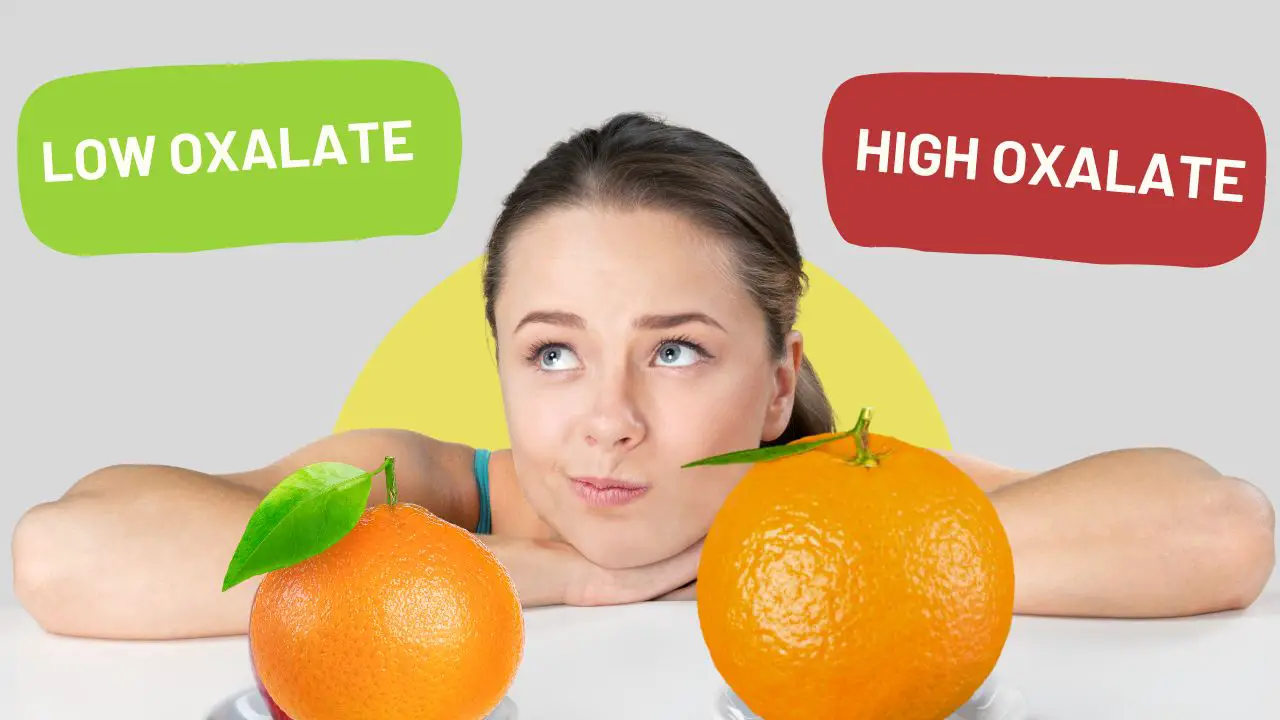

Just wondering the reference(s) for your oxalate food lists. I have downloaded numerous oxalate lists and many are conflicting about the same foods. One says a food is high and another says low. This is crazy. Please share your source of information. Thanks…
Does it make a difference if the fruits are canned or dried? I prefer fresh but it is very hard for me to get out regularly to go to the grocery.
From what I have found, the oxalate content in fruits does change depending on whether they are fresh, canned, or dried. Fresh fruits seem to have the original oxalate levels, while drying them concentrates the oxalates, so dried fruits end up being higher in oxalates. Canned fruits might have slightly lower oxalate levels because of the heating process, but it can vary. Honestly, if you struggle to get fresh fruits regularly, I think frozen fruits are a great alternative. They keep their nutrients well and do not have the high oxalate levels you find in dried fruits.